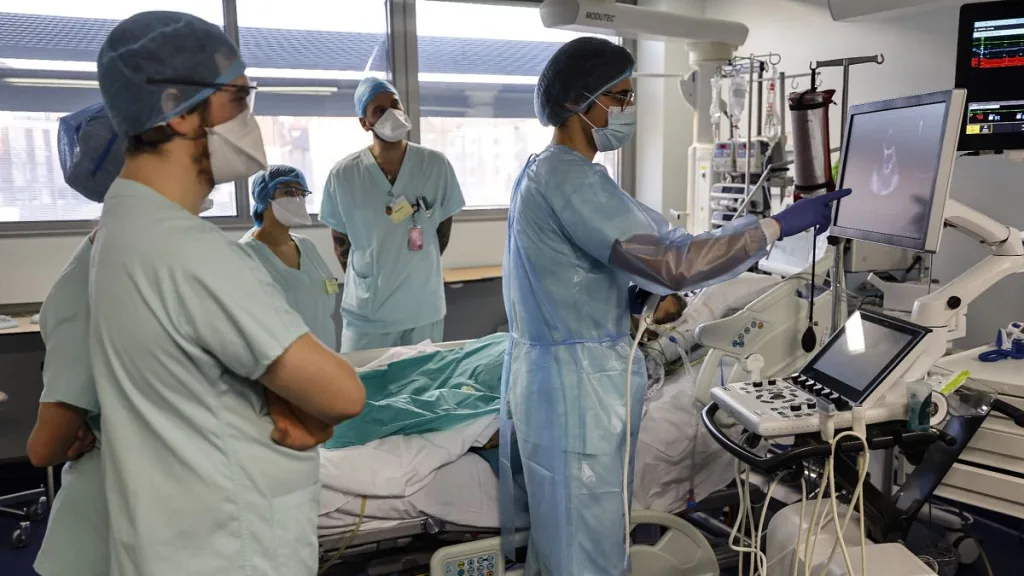Last year in Woburn, Massachusetts, an unassuming power line was installed across a 100-foot stretch of land. To the casual observer, this installation looked like just another ordinary utility line supported by familiar poles. However, this seemingly mundane sight holds significant promise for the future of energy transmission.
Engineered to carry five to ten times more power than traditional transmission lines while maintaining the same footprint and voltage level, these innovative lines could help tackle regulatory challenges and community resistance that often obstruct efforts to enhance transmission capacity—especially in the United States and Europe. These advancements are crucial for integrating renewable energy sources and fortifying the resilience of our electrical grids.
The revolutionary lines are a product of years of dedication by startup VEIR, co-founded by Tim Heidel, an MIT alumnus with deep expertise in electrical engineering. With an advanced cooling system, VEIR’s superconducting cables promise initial transmission capacities of up to 400 megawatts, with future models targeting several gigawatts.
“By deploying higher power levels at lower voltages, we reduce the visual and spatial impact of our installations, which can help alleviate public opposition as well as facilitate easier siting and permitting processes,” Heidel explains.
VEIR’s innovation comes at a critical moment—over 10,000 renewable energy projects are currently seeking grid connections across the U.S. The White House has emphasized the necessity to double existing regional transmission capacity to meet decarbonization goals set for 2035.
This demand is further compounded by the increasing electricity needs driven by expanding data centers, artificial intelligence applications, and the broader shift toward electric vehicles and sustainable home heating solutions.
Despite these growing demands, constructing high-capacity transmission lines is fraught with challenges.
“Establishing high-capacity transmission infrastructure can take a decade or even longer. Many projects have been shelved due to overwhelming opposition or complexity and cost obstacles,” Heidel notes. “Our approach allows us to operate at much higher current levels while reducing voltage, enabling our lines to blend in seamlessly and avoid typical opposition.”
VEIR has attracted considerable interest from utilities, data center operators, industrial firms, and renewable energy developers, looking to complete its first commercial-scale pilot of high-power transmission by 2026.
A Career Focused on Energy
Over his extensive career at MIT, Heidel transitioned from understanding the fundamentals of electrical engineering to specializing in the complexities of the electric grid and the power sector as a whole. His academic journey included multiple degrees from MIT’s Department of Electrical Engineering and Computer Science and a master’s in the Technology and Policy Program.
“The energy sector captivated my interest, and I refocused my studies on energy and climate during graduate school,” Heidel reflects.
After earning his PhD, he took on the role of research director for MIT’s Future of the Electric Grid project, completed in 2011.
“That experience provided a comprehensive overview of the challenges within the power sector and laid a solid foundation for understanding grid operations and expansion,” he adds.
Following his time at MIT, Heidel further explored transmission systems at the Department of Energy’s Advanced Research Projects Agency-Energy (ARPA-E) and at Breakthrough Energy Ventures, co-founded by Bill Gates.
“Every significant decarbonization study in recent decades acknowledges that achieving major greenhouse gas reductions will necessitate a doubling or tripling of global power grids,” Heidel asserts. “However, evidence indicates that building new transmission is becoming more time-consuming and expensive, signaling an urgent need for innovative solutions.”
VEIR’s technology leverages advancements in high-temperature superconductors and other materials, some of which have been developed through initiatives in the nuclear fusion sector.
At the core of VEIR’s innovation is its advanced cooling system, originally conceived over 15 years ago by co-founder Steve Ashworth at Los Alamos National Laboratory during a Department of Energy research project. This design lay dormant until Heidel and his colleagues at Breakthrough Energy Ventures rediscovered it in 2019. Presently, the system utilizes passive nitrogen cooling within a vacuum-insulated pipe encasing superconducting cables, complemented by heat exchange units on select towers.
Typically, transmission lines designed for high power require larger structures than those proposed by VEIR. Previous attempts to reduce their footprint were often confined to short underground distances.
“High power transmission usually demands high voltage, which results in taller towers and wider right-of-ways that garner considerable public resistance,” Heidel explains. “This is a universally recognized issue worldwide.”
Powering the Future
VEIR’s debut alternating current (AC) overhead product line can handle transmission capacities of up to 400 megawatts at voltages reaching 69 kilovolts, with plans for even higher voltage and power capabilities in the future, including direct current (DC) lines.
The company aims to sell its technology to entities installing transmission lines, initially focusing on the U.S. market.
Looking ahead, Heidel believes that the urgency for VEIR’s technology cannot be overstated as demand for electricity and new renewable projects escalates worldwide.
Photo credit & article inspired by: Massachusetts Institute of Technology



